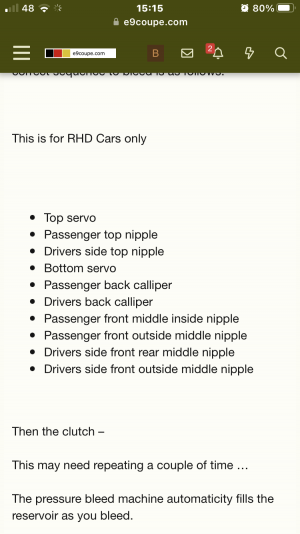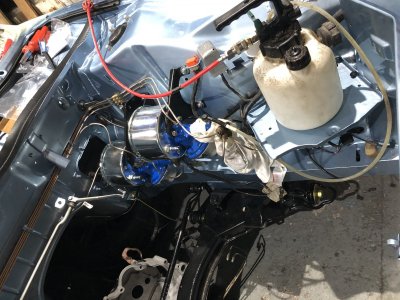Hi guys
I have been trying to bleed my RHD brakes all week now and I keep getting bubbles coming out through the bleeder.
I have been bleeding the brakes for about 15 hours at this stage
I am using a vacuum bleeder which I did think is very good , it’s just that it’s taking so long to do that now I’m beginning to wonder if maybe the system is somehow not suitable to be Vacuum bled but should instead be pressure bled .
Has anyone succeeded in bleeding a RHD system using a Vacuum bleeder before ?
I am following the sequence of bleeding as per the photo attached :
I have been trying to bleed my RHD brakes all week now and I keep getting bubbles coming out through the bleeder.
I have been bleeding the brakes for about 15 hours at this stage
I am using a vacuum bleeder which I did think is very good , it’s just that it’s taking so long to do that now I’m beginning to wonder if maybe the system is somehow not suitable to be Vacuum bled but should instead be pressure bled .
Has anyone succeeded in bleeding a RHD system using a Vacuum bleeder before ?
I am following the sequence of bleeding as per the photo attached :


